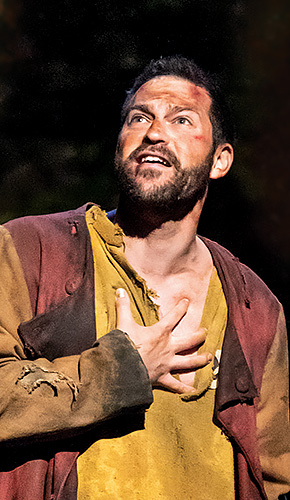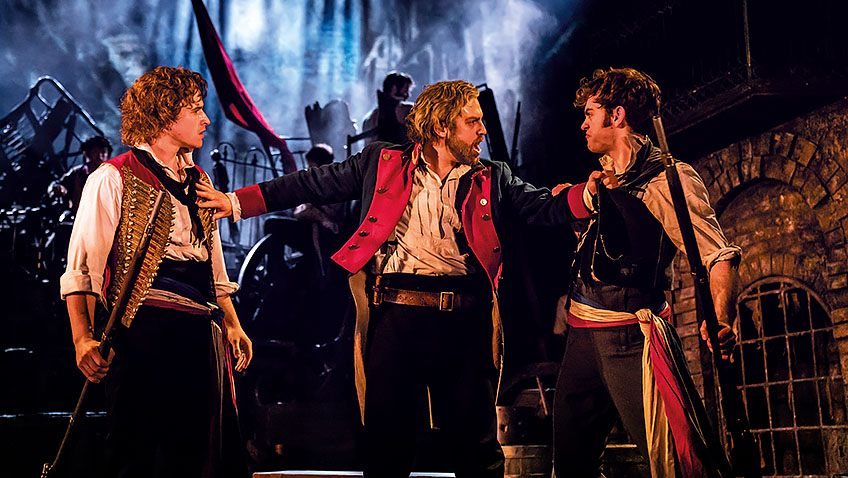Robert Tanitch reviews Les Misérables at Sondheim Theatre, London W1
Victor Hugo always said Les Misérables was for everyone. But who would have thought you could actually call the musical Les Misérables in the UK and not empty theatres.
And who would have thought in 1985 that it would still be running 35 years later, the longest-running musical in musical history?
Certainly not the critics who gave it a bad press when it premiered at the Barbican in 1985 in a production by Trevor Nunn and John Caird for the RSC. It was brave of Cameron Mackintosh to transfer it to the West End.

Jon Robyns in Les Misérables
Fortunately, the public ignored the critics and having been turning up in large numbers ever since, first at the Palace Theatre and then at the Queen’s Theatre, which has now been renamed Sondheim Theatre and beautifully refurbished.
Claude-Michel Schonberg, Alain Boublil and Herbert Kretzmer’s full blown operatic musical, entirely sung though, is one of the great successes of musical theatre; and it has been seen by over 120 billion people worldwide in 52 countries and in 22 languages.
The arrival of the film version, with Hugh Jackman and Russell Crowe, directed by Tom Hopper, in 2012, helped to increase the box-office receipts at theatres even more.
Schonberg and Boublil were inspired to turn Victor Hugo’s novel into a musical after they had seen Cameron Mackintosh’ revival of Lionel Bart’s Oliver! In London.
Les Misérables are the poor, the outcasts, the underdogs. The action, which starts in 1815 with the release of Jean Valjean from prison and his hounding by Inspector Jarvet, climaxes with the student riots in 1832, which led to the abdication of King Charles X.
Highly emotional, the musical offers nineteenth century melodrama with big emotional performances and pantomime mugging plus soaring arias, music hall numbers and rousing anthems such as Do You Hear the People Sing and One Day More. The vocal energy is impressive throughout.
In 2010 Cameron Mackintosh celebrated the 25th birthday with new orchestrations and a new touring production by Laurence Connor and James Powell with new designs by Matt Kinley who took his inspiration from Hugo’s paintings. It is this sparser touring production, lit by Paule Constable, which has replaced the original Trevor Nunn/John Caird production.
The coup de theatre (and much missed) used to be when the two sections of John Napier’s towering slum set keeled over to form an enormous barricade right across the width of the stage; and a bit later there was a superb romantic tableau of the dead worthy of Delacroix. Now it is the sheer size of the Paris sewers which make the most visual impact.
 The vocal high spots include Jon Robyns (Valjean) singing Who Am I? And Bring Him Home, Carrie Hope Fletcher (Fontine) singing I Dreamed A Dream, Bradley Jaden (a young Javert) singing Stars, Shan Ako (Eponine) singing On My Own and Harry Apps (Marius) singing Empty Chairs and Empty Tables.
The vocal high spots include Jon Robyns (Valjean) singing Who Am I? And Bring Him Home, Carrie Hope Fletcher (Fontine) singing I Dreamed A Dream, Bradley Jaden (a young Javert) singing Stars, Shan Ako (Eponine) singing On My Own and Harry Apps (Marius) singing Empty Chairs and Empty Tables.
To learn more about Robert Tanitch and his reviews, click here to go to his website




